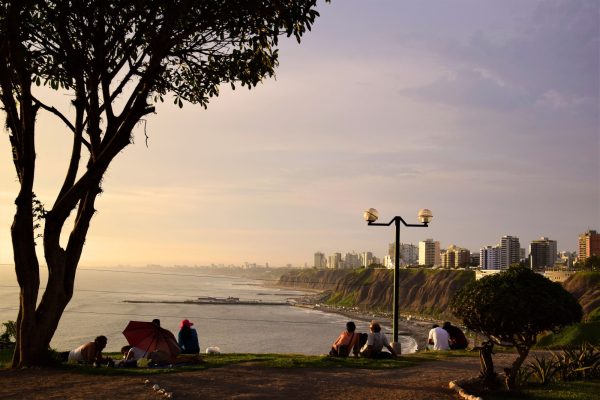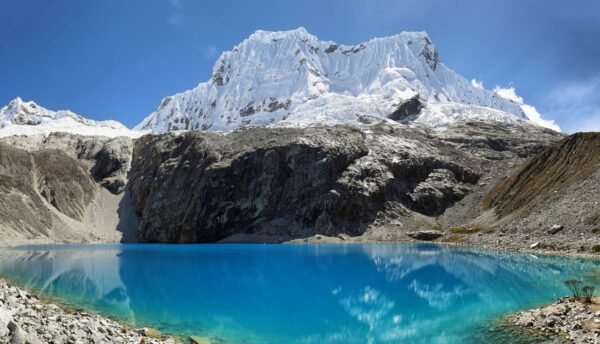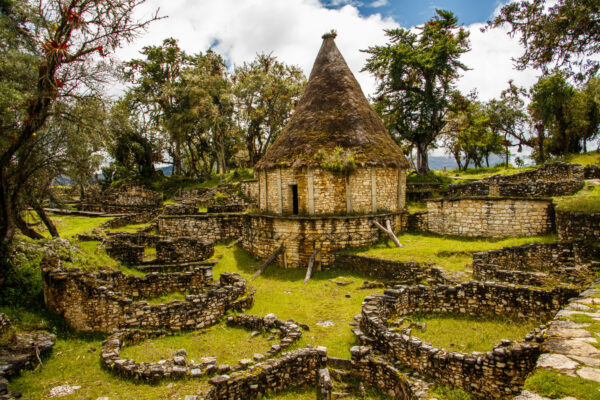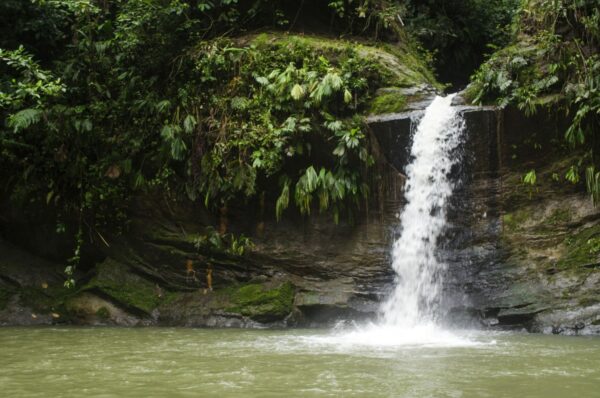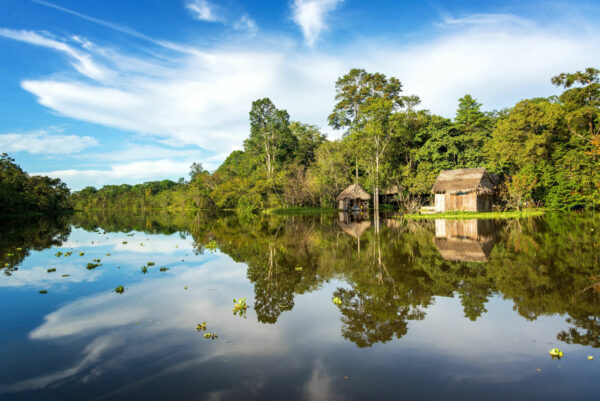Northern Peru beyond Machu Picchu
Amazon river cruises and archaeological wonders
The vast majority of tourists who come to Peru never head north of Lima. They tend to stick to the popular “Gringo Trail” in the southern half of the country, heading from Lima to destinations such as Nazca, Arequipa, Lake Titicaca and, of course, Cusco and Machu Picchu. The northern half of the country is comparatively overlooked, but that doesn’t mean it’s any less interesting. In fact, the north has just as much to offer, but without the tourist hordes found at popular attractions in the south.
Begin in Lima before heading north to Huaraz, Trujillo and Chiclayo, then heading further inland to Chachapoyas, Tarapoto and finally Iquitos, from where you can fly back to Lima. All of this can be done by bus, with the exception of Tarapoto to Iquitos, which requires a flight or a boat journey. You can fly from Lima to all of these destinations, and vice versa, but once you’re on the route, flights between cities will be limited in some situations.
Surfers might notice that this itinerary doesn’t cover the stretch of coastline from Chiclayo to the northern tip of Peru, which is prime surfing territory. If you’re coming to Peru primarily to surf, then you’ll want to travel along that stretch. But for other travellers, the beaches around Chiclayo and Trujillo will probably suffice.
In terms of time, stopping at all seven cities mentioned here would take at least two weeks, and more if you only travel overland. If you don’t have that long, then you’ll have to skip some places. Ideally, you’ll have three weeks or more to do justice to all these destinations, especially if you want to trek in Huaraz, take the cargo boat to Iquitos, or go on an Amazon riverboat cruise or jungle expedition.
As this itinerary covers all of the three main geographic regions of Peru (coast, highlands and jungle), it’s not easy to nail down the best time to visit. Generally speaking, however, anytime from May to the end of September works well, as you’ll miss the rainy season in the jungle and still have good weather in the highlands and along the coast. But you can do the route any time of year. Just pack clothing that covers everything from scorching desert to chilly highlands to hot and sweaty jungle.
Suggested itinerary

Start in cultural Lima
Day 1–2 in Lima
Many tourists arrive in Lima only to fly straight out to Cusco, Arequipa or other popular tourist destinations in Peru. But the country’s sprawling capital deserves a chance to impress, and travellers who stick around for a few days are rewarded with a fascinating mix of history, culture, food and drink in this metropolitan melting-pot of all things Peruvian.
Lima is increasingly recognised as the culinary hotspot of South America, and foodies flock here to dine at world-renowned restaurants owned by Peruvian celebrity chefs such as Gastón Acurio and Virgilio Martínez. The city is also packed with lively cafes, bars and nightclubs, spread across bohemian districts, chic upscale areas, and places where regular Peruvians grab a cold beer.
The city is also home to most of Peru’s best museums and art galleries, while the historic centre – all of which is a UNESCO World Heritage site – is packed with mansions, churches and palaces from Peru’s colonial period and the Republican Era. You’ll also find archaeological sites right in the heart of the city, such as Huaca Pucllana in Miraflores, as well as the vast complex of Pachacamac just south of Lima’s urban boundary.
Don't miss
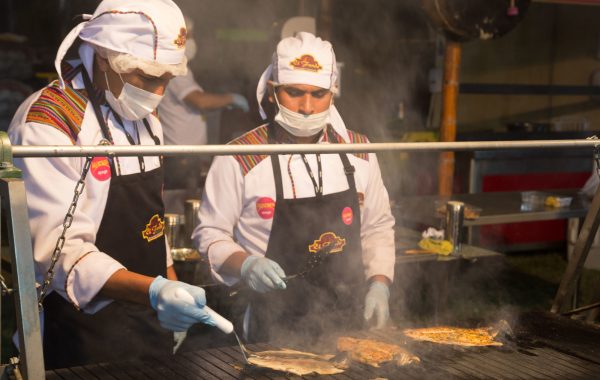
Eat like a king in Lima
Lima’s chefs cook up a storm with the fruits of the sea, mountains and jungle. But it’s not all fine dining and exclusive restaurants: Peru’s is an egalitarian cuisine and you’ll find excellent food at street stalls, local markets and neighbourhood cantinas.

Visit Lima's brain museum
Marvel, and perhaps shudder a little, at the largest collection of brains in South America. Lima’s Brain Museum (Museo del Cerebro) houses more than 3,000 neurological samples, including 300 brains on public display. It closes at 1pm and visitors must be 10 or older, due to the creepy exhibits.
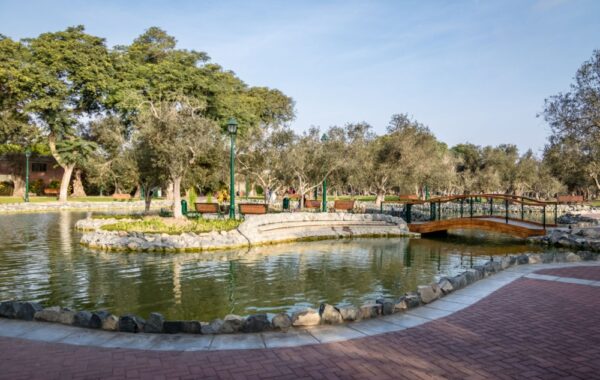
Enjoy the Bosque el Olivar
Stroll through the beautiful Bosque el Olivar in the San Isidro District, with its 44 species of trees and more than 20 species of birds. The origins of the park date back to 1560, when the Spaniard Antonio de Rivera sailed to Lima carrying 100 olive saplings. Only three saplings survived the journey, but from them grew many more. Today the tranquil park contains more than 1,500 olive trees grown from the original three plants.

Explore the Cordillera Blanca near Huaraz
Day 3–4 in Huaraz
If you want to trek or go mountain climbing, then there’s nowhere better in Peru than Huaraz. Huaraz is the main gateway to the Cordillera Blanca and Huascarán National Park, home to the highest mountain in Peru, Mount Huascarán. It’s a trekker’s paradise, with hiking routes to fit all abilities and itineraries. Laguna 69 is one of the best one-day treks and ideal if you’re short on time. Otherwise, you can tackle the four- or five-day Santa Cruz trek, or the epic Huayhuash trek, which takes 10 to 14 days. Whichever one you choose, you will be walking through some of the most spectacular Andean scenery in Peru, with snow-capped peaks and crystal-clear mountain lakes.
How much time you spend in Huaraz will depend on how much you want to trek, paraglide, mountain climb etc. There’s not a lot to do in the city, apart from eat and drink, with outdoor activities being the main reason to stick around. If you do a one-day trek like Laguna 69, you can be in and out in two days. But if you want to do the Huayhuash trek, then plan for around two weeks. Once you’re done, hop on a bus to Trujillo (you might have to change buses in Chimbote).
Don't miss
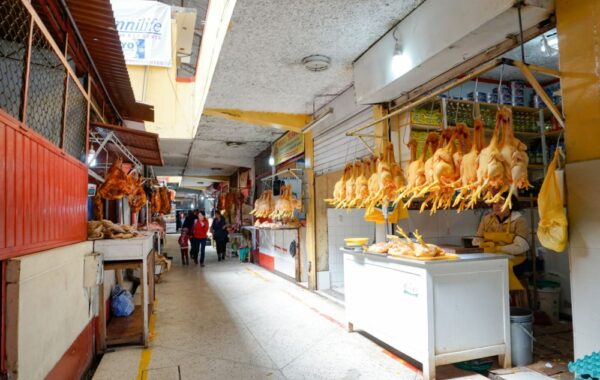
Stock up at Huaraz's Mercado Central
Shop for supplies at the Mercado Central, the main market in Huaraz. This traditional market is not only a great place to buy fruit and veg, but it also offers an insight into the local culture, with stall owners in traditional dress selling all kinds of local produce. Vegetarians beware: there’s a lot of meat on display, including freshly-skinned guinea pigs ready for the pot.
Investigate Chan Chan near Trujillo
Day 5–6 in Trujillo
The coastal city of Trujillo has one of the most elegant city centres in all of Peru. The expansive Plaza de Armas is one of the most impressive in the country, and the historic centre is packed with colonial casonas, Republican-era mansions and cathedrals. It’s worth spending a few hours strolling through the streets, soaking up the atmosphere and trying some classic dishes from northern Peru.
Beyond that, the main attractions around Trujillo are the numerous archaeological sites of the once-powerful Moche and Chimú cultures. The two key sites are the Huacas del Sol y de la Luna complex, with its truncated pyramidal structures, murals, and platforms believed to have been used for human sacrifices. Then there’s the vast Chimú capital of Chan Chan, which may have been home to as many as 100,000 people before the Inca Empire conquered the Chimú around 1470 AD. Both sites are easy day-trips from Trujillo. Also consider visiting the beach town of Huanchaco, about 20 minutes from Trujillo. Popular with surfers, it’s known for its caballitos de totora (traditional reed fishing boats, used in Peru for at least 3,000 years) and its ceviche.
If you stay a couple of nights in Trujillo, you’ll have enough time to visit Huacas del Sol y de la Luna and Chan Chan, and explore the city a little. Stay longer if you want to spend more time in Huanchaco or visit other archaeological sites such as Huaca Arco Iris, Huaca Esmerelda and, further out, Huaca el Brujo.

Meet the Lord of Sipan near Chiclayo
Day 7–8 in Chiclayo
After Trujillo, take a bus straight up the coast to Chiclayo, a major commercial hub on the north coast. The city itself is short on attractions and isn’t as pretty as Trujillo, but it’s worth a visit for the nearby museums and surrounding archaeological sites. The most famous site is Huaca Rajada, also known as Sipán, where the Lord of Sipán was discovered. Considered one of the most important archaeological discoveries in Peru in the last 30 years, the tomb was laden with jewellery and ornaments made of gold, silver, copper and semi-precious stones, and of course the mummy of the Lord of Sipán himself. The mummy is now housed in the world-class Museo Tumbas Reales de Sipán in Lambayeque, a short ride from Trujillo. It’s one of the best museums in Peru and a top attraction for anyone interested in the history of the country. The nearby Brüning Museum, too, is full of fascinating artefacts from the Chimú, Moche and Chavín cultures, including a truly impressive “Gold Room.”
While you’re in Chiclayo, make the most of the excellent local cuisine, featuring unique regional dishes such as arroz con pato (duck), seco de cabrito (goat), chinguirito (dried fish) and King Kong (a local dessert made with cookies and manjar blanco). Also visit the sprawling Mercado Modelo and Mercado de Brujos (Witches' Market), the latter full of all kinds of shamanic produce and ingredients.
Two full days is enough to visit the museums in Lambayeque and go to Huaca Rajada. If you have time, maybe add on an extra day to relax and make the most of the food before heading east by bus to Chachapoyas. The bus journey takes about 10 hours.

Head to the Chachapoyas cloud forest
Day 9–10 in Chachapoyas & Kuelap
Chachapoyas sits on the eastern slopes of the Andean range and is an intriguing mix of highland and jungle cultures. It’s a charming place with plenty of things to see and do in the surrounding area. Its two most famous attractions are the hilltop archaeological site of Kuélap (often referred to as the “Machu Picchu of the North”) and the magnificent Gocta Waterfall, one of the tallest waterfalls in the world. But that’s not all that Chachapoyas has to offer: the Sarcophagi of Karajía, Leymebamba Museum, the Sonche and Huanca Urco canyons, and the charming Huaylla Belén river valley are just some of the other attractions within easy reach of the city.
If you’re mainly interested in visiting Kuélap and Gocta, then two full days is enough for Chachapoyas. But don’t be surprised if you want to stay longer. You could easily spend four or five days, especially if you want to go trekking, rafting or canyoning, all of which are increasingly popular in Chachapoyas. Just don’t expect much in the way of nightlife, as Chachapoyas is very sedate after dark.
Once you’re ready to move on, you can either make another lengthy bus journey to Tarapoto (12 hours) or make use of the light aircraft that fly between the two cities. The SAETA airline has regular scheduled flights between Chachapoyas and Tarapoto, which take about 30 minutes.

Sample Peruvian nightlife in Tarapoto
Day 11–13 in Tarapoto
Tarapoto is a fun and friendly city in the high jungle of Peru. If you were itching for some nightlife in Chachapoyas, then you’ll certainly be able to unwind in Tarapoto with its many bars and big discotecas. There’s not much to do in the city apart from eating, drinking and dancing, although a visit to the Tabacalera del Oriente cigar factory is recommended even if you don’t smoke cigars.
Head out of Tarapoto, however, and you’ll find plenty to explore. The landscape is dotted with pretty waterfalls, most famously Ahuashiyacu, offering a refreshing escape from the heat. The Cordillera Escalera Conservation Area also sits right on Tarapoto’s doorstep. The infrastructure inside the protected area is minimal, but you can hire a local guide to take you trekking through the cloud forest. Popular day-trips include Laguna Azul and the lakeside village of Sauce, where you can go boating and trekking, and the historic hilltop settlement of Lamas with its own indigenous community – and, somewhat incongruously, a large faux-medieval castle built by an Italian expat.
If you feel like partying, plan on being in Tarapoto on a Friday or Saturday night. Then, depending on your hangover, you’ll probably want at least a couple more days to visit some waterfalls and go to Lamas or Laguna Azul.
Travelling on to Iquitos is either mundanely straightforward or downright adventurous. The easy option is to fly directly between the two cities. Alternatively, you can make the two-hour trip by bus or shared taxi service to the port town of Yurimaguas. In Yurimaguas, you can arrange passage on a cargo boat for the three- or four-day river journey to Iquitos. There are also smaller, faster boats that can get you there in 12 to 14 hours. If time isn’t an issue, consider taking the cargo boat. It’s a great way to get a feel for the Amazon and really disconnect from the wider world. Most passengers simply string up a hammock on the large and open passenger deck, but I recommend getting a private cabin for extra privacy and for keeping your bags safe.

Head into the jungle in Iquitos
Day 14–17 in Iquitos
Iquitos is famous for being the largest city in the world that can’t be reached by road. Stuck way out in the lowland Amazon jungle, it’s a lively port city and a gateway for exploring the surrounding jungle. Wealthy tourists come to Iquitos to go on weeklong Amazon cruises and stay in luxury jungle lodges. But budget backpackers can arrange far more affordable trips into the jungle, especially into the vast and spectacular Pacaya-Samiria National Reserve (which is also accessible from Yurimaguas).
Before you head into the jungle, take at least a day or two to explore this unique city. Stroll along the riverfront boulevard and you’ll see the old mansions built by wealthy Europeans during the rubber boom days. You’ll also see a growing number of cafes, restaurants and bars that cater to the steady influx of tourists. Don’t miss the huge Belén Market, without doubt, one of the most interesting markets in Peru, where you’ll see the huge array of produce that comes to Iquitos daily from the surrounding rivers and rainforest. It’s also worth heading just outside the city to the Amazon Rescue Center, where you can feed orphaned baby manatees, and the Pilpintuwasi Butterfly Farm and Animal Orphanage, home to countless colourful butterflies and a variety of rescued animals.
If you’re going to do some kind of jungle trip, then allow at least four days for the expedition (or as long as two weeks for some cruises). You’ll also want at least two days to explore Iquitos before heading off. From Iquitos, it’s just a case of flying straight back to Lima, from where you can catch your flight home. Or you can turn around and jump back on the cargo boat in Iquitos and start the whole process in reverse.
Don't miss
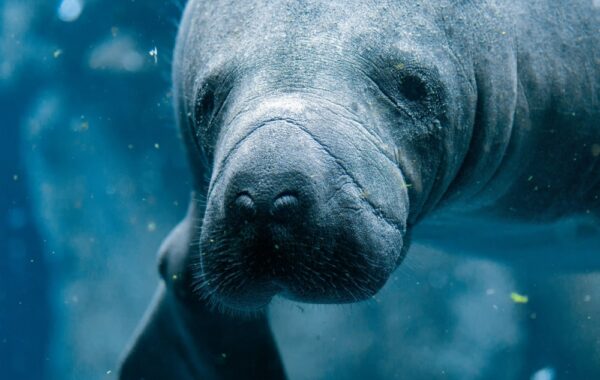
See manatees at the Amazon Rescue Center
Feed orphaned baby manatees at the Amazon Rescue Center, a wonderful place just outside Iquitos. The centre rescues orphaned manatees and later releases them back into the wild. Visitors to the centre not only help keep it running with their entrance fees, but they can also feed the fat little manatees – a truly heart-warming experience.
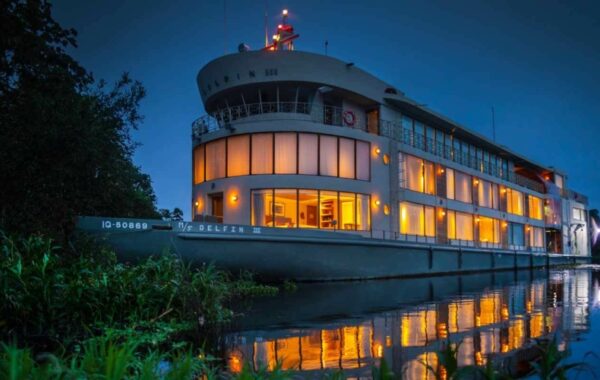
See the Amazon by luxury cruise
From Iquitos board a luxurious river cruise ship for an intimate voyage down the Amazon River to Pacaya Samiria National Reserve. Swim and kayak from the boat and keep an eye out for macaws, toucans, umbrella birds, monkeys, river otters, river dolphins and more.

Depart from Lima
Day 18 in Lima
Head back to Lima for your international departure.
Other itineraries you might like

Classic Peru & Machu Picchu
The classic route to Peru's most popular highlights
Approx. 6 days
Machu Picchu & Amazon cruise
Small-ship luxury cruise with Machu Picchu
Approx. 9 days

